Wrist extensor tightness
Wrist extensor tightness is a common issue, and there are too many causes of it. Overuse of muscle pain, injury, or paralysis-related condition may lead to muscle tightness.
To relieve muscle tightness of the wrist extensor muscles, Stretching exercise is the best option with a combination of strengthening exercises.
Anatomy of the wrist extensor muscles
The wrist extensors muscle are:
- Extensor carpi radialis longus (ECRL)
- extensor carpi radialis brevis (ECRB)
- extensor digitorum (ED)
- extensor digiti minimi (EDM)
- extensor carpi ulnaris (ECU)
- extensor indicis (EI)
1) Extensor Carpi Radialis Longus:
- Origin: ECRB originates from the lateral supracondylar ridge of the humerus.
- Insertion: It inserts on the dorsal surface of the base of the second metacarpal bone.
- Nerve Supply: the radial nerve.
- Action: It acts as an extensor of the wrist joint and abductor of the hand at the wrist joint.
2) Extensor Carpi Radialis Brevis:
- Origin: It originates from the anterior of the lateral epicondyle of the humerus.
- Insertion: inserts on the posterior base of the 3rd metacarpal.
- Nerve Supply: It is supplied by the deep branch of the radial artery.
- Action: It acts as an extensor and abductor of the hand at the wrist joint.
3) Extensor Digitorum:
- Origin: from the lateral epicondyle of the humerus.
- Insertion: ED inserts with the common extensor expansion of the middle and distal phalanges of the 2nd, 3rd, 4th, and 5th fingers.
- Nerve Supply: the posterior interosseous nerve.
- Action: It extends the hand, wrist, and fingers
4) Extensor Digiti Minimi:
- Origin: EDM originates from the anterior portion of the lateral epicondyle of the humerus.
- Insertion: EDM inserts with the common extensor at the base of the proximal phalanx of digit V on the dorsal side.
- Nerve Supply: It is supplied by the posterior interosseous nerve(C7-C8).
- Function: EDM works as an extensor of the wrist and the little finger
5) Extensor Carpi Ulnaris:
- Origin: It has 2 heads
- Humeral head: It originates from the lateral epicondyle of the humerus.
- Ulnar head: It originates from the olecranon, posterior surface of the ulna, and antebrachial fascia.
- Insertion: It inserts on the 5th metacarpal bone.
- Nerve Supply: It is supplied by the deep branch of the radial nerve(C7, C8).
- Action: It extends and adducts the wrist.
6) Extensor Indices:
- Origin: EI originates from the posterior distal third of the ulna and interosseous membrane.
- Insertion: It inserts on the index finger.
- Nerve Supply: supplied by the posterior interosseous nerve.
- Action: It extends the index finger and wrist
Causes of the wrist extensor muscle tightness:
- Injury or An acute trauma, similar to a fall, can create a fracture in one of the forearm bones or damage to the ligaments and tendons. Overuse of the muscles Some sports, similar to tennis players and certain types of exercise, put a high degree of pressure on muscles in the forearm and can cause them to strain and stiff.
- Extreme usage of computers or phones can also bring on muscle strain in the forearm, which is known as a Repetitious strain injury (RSI).
- Pain caused by Repetitive strain injury (RSI) starts gradually seen mostly in computer workers or grounded labor and this way muscle tightness develops after repeated use of the muscle.
- Nerve entrapment When nerves are compressed, it can lead to referred pain, insensibility, or a tingling feeling in and around the involved area.
- Nerve entrapment can be caused by a range of different courses affecting the wrist muscles The most common of which is carpal tunnel syndrome.
- Arthritis of the joint in the wrist or elbow, fingers causing wrist extensor tightness.
- paralysis or brain stroke any neurological condition in which spasticity develops and ultimately leads to wrist muscle tightness.
- Injury to any of the parts of your wrist can cause pain, and stiffness and also affect your ability to use your wrist and hand.
- Sudden impacts. Wrist injuries mostly occur when you fall forward onto your outstretched hand. This leads to sprains, strains, and even fractures.
- A scaphoid fracture is an injury to a scaphoid bone located on the thumb side of the wrist.
- De Quervain’s disease is a repetitive stress on the muscle that causes pain at the base of the thumb.
- Osteoarthritis: It occurs when the cartilage that cushions located between the joints of your bones deteriorates aged you age. Osteoarthritis in the wrist is rare and usually seen only in people who have injured that wrist in the past.
- Rheumatoid arthritis: in which the body’s immune system attacks its own tissues mainly joints, It commonly involves the small joints such as fingers and wrist. It is affected in both wrists.
- Carpal tunnel syndrome: Carpal tunnel syndrome occurs when there’s increased pressure on the median nerve as it passes through the carpal tunnel at the wrist, a passageway in the palm side of your wrist.
- Ganglion cysts: These soft tissue cysts are seen most often on the part of your wrist mainly the backside of your palm. It may be painful, and pain may either aggravate or improve with activity.
- Kienbock’s disease: This condition mainly affects young people and involves the progressive breakdown of one of the small bones in the wrist. It occurs when the blood supply to this bone is compromised.
- When you type on a keyboard or scroll on a touch screen device, you’re performing repeated finger movement, which like exercise, overuse of a muscle leads to muscle fatigue and therefore protective body mechanism causes wrist muscle tight develop.
- Also, since many of the back of the forearm muscles actually insert into the hands and fingers, it’s not surprising that repetitious movements involving the fingers can actually affect in tightness of wrist flexors and extensors.
- This is why many people witness wrist extensor muscle tightness due to gaming or overuse of technology.
Symptoms of wrist extensor muscle tightness:
- The most common symptoms feel and look like a stiff and tight arm while moving and swelling in the back of the forearm.
- tightness may bring on symptoms in or around your elbow, wrist, and hand or fingers.
- the warmth of the muscles
- throbbing or pulsing
- burning type of sensation feel sometimes
- stiffness, frequently worse after sleeping or prolonged rest.
- severe pain when trying to use the wrist, elbow, forearm, or fingers
- Incapability to bear weight on the forearm, wrist, or elbow
- impassiveness in the wrist, hands, fritters, or elbow
- a lump on the forearm, bulky muscle seen around the front of the forearm
- a grating feeling when moving the arm
- stiffness feel while typing or mechanical work.
Indications of exercise in Wrist extensor tightness:
- Regular stretching can help to improve the flexibility of the joint and muscle
- To gain better joint ROM
- Increase the length of muscle-tendon connective tissue
- Return normal neuromuscular function
- Reduce compression on joint exteriors
- prevent injuries around muscles.
- Stretching exercise may be used previous and after vigorous exercise to reduce the risk of muscle soreness
- prevent post-fracture muscle tightness.
- help to reduce stiffness of the joints and muscles
Contraindications of exercise:
- Joint movement limited by bony blocks
- After fracture until bone healing is complete
- Acute inflammatory or contagious process/infection
- Non-union fracture / incomplete union
- If Sharp, acute pain during joint movement or muscle stretching
- Hematoma or other soft tissue trauma
- Hypermobility exists
- an open wound or recent surgery
How to Prevent Wrist Extensor Tightness?
- Avoid activities that put excessive strain on the forearm, such as tennis or certain types of weightlifting exercise.
- Taking regular intervals from long periods of computer use and using an ergonomic keyboard.
- Strengthening exercise of the forearm and increasing grip strength through strengthening exercise.
- Build bone strength. Take enough amounts of calcium-rich diet — 1,000 milligrams a day for most adults and at least 1,200 milligrams a day for women over age 50, It can help reduce fractures and other complications.
- Use protective gear for athletic activities. Use wrist guards for high-risk sports or activities, such as Hockey, football, snowboarding, and rollerblading.
- Pay attention to ergonomics. If you spend a long time at a keyboard, take regular intervals. During typing, keep your wrist in a neutral position. An ergonomic keyboard or wrist support may help.
Benefits of stretching:
- Improved Grip: Flexible forearms and wrist muscles are essential because they allow you to strengthen other muscles such as the biceps, triceps, deltoids, chest, and back. Powerful grip and control of weights through a full range of motion is an important part of any strength training exercise, so it’s essential to make sure that you don’t avoid these muscles.
- Reduced Risk of Joint Strain: Flexible forearms can help to reduce the risk of extensor muscle strain by evenly distributing the weight over the arms when you play sports, exercise, or lift and carry things as part of your daily activity.
- Increased Dexterity: Flexible forearms, wrists, and hands improve fine motor skills such as those needed to type, write, or play musical equipment.
Stretching exercise for wrist extensor tightness:
Wrist rollout:
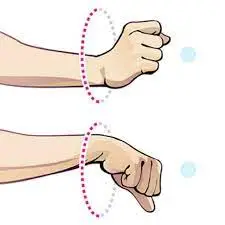
- This stretch warms up the wrist extensor muscle and brings a circle into the joint.
- to do this, start by keeping your palms together in front of you and resist your fingers. Bring your forearms close together.
- Keep your forearms steady and make circles with your fists. Reprise 5-10 times.
- Take 5 to 10 circles in the opposite direction.
Wrist extensor stretch:
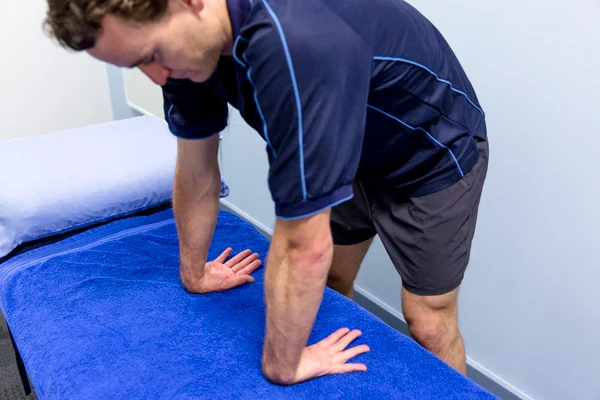
- Relieve tension in the covers of the wrists and forearms with this extensor stretch.
- To do this, Start on your hands and knees in a tabletop position. Keep your wrists underneath your shoulders while your knees are underneath your hips.
- place your hands so that your fingers point towards your knees and the tops of your hands are on your mat. Keep your abs tight to control the quantity of weight you’re placing on the hands and wrists.
- Gradually shift your hips back towards your heels until you feel a gentle stretch through the tops of the wrists.
- Hold for 10-30 seconds, then gradually release.
Wrist Flexion Stretch Fingers Down :
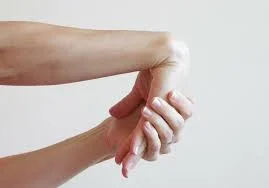
- Straighten your affected arm in front of you with your palm facing towards you and fingers pointing down.
- Use your opposite hand around the reverse of your affected hand.
- Keeping your fingers relaxed, gradually pull towards you until you feel the gentle stretch in the back of your wrist.
- Hold the stretch for 10-30 seconds, adding gentle pressure until you feel a comfortable stretch.
Wrist Flexion Stretch Fingers Up:
- Straighten your affected arm and hold it out in front of you, with your palm facing towards you and your fingers facing up.
- Use your opposite hand around the reverse of your right hand.
- Gently pull with your opposite hand towards your body until you feel the gentle stretch in the reverse of your affected wrist.
- Hold the stretch for 10-30 seconds, adding gentle pressure until you feel a comfortable stretch.
Palms Press Thumbs In:
- Press your palms jointly in front of you with your thumbs facing in and your fingers upwards.
- Gradually lower your hands as much as you can without separating the heels of your hands.
- Hold the stretch for 10-30 seconds, then relax for a few seconds.
- Perform 3-5 times.
Kneeling Floor Wrist Flexion Stretch:
- Kneel on the floor.
- Keep the backs of your hands on the ground just above your knees.
- Try to sit your butt back onto your heels as you keep your arms locked straight to feel gently stretched on your wrists.
- Hold the stretch for 10-30 seconds, then relax for a few seconds and bend your wrists the other way to opposite the stretch.
- Repeat 3-5 times.
Resisted band extensor stretch:
- Sit on a chair, use a resistance band (thera-band) in the right palm, and step on the other end with the right foot.
- Keep the affected elbow on the thigh, with the palm facing down.
- This is the starting position.
- Flex the fist up toward the body.
- Hold this act for a second.
- Extend the wrist down toward the floor.
- Do this 10-12 times and then use the thera-band in the opposite hand and repeat.
- 2 sets of 10 reps with each hand.
Forward Wrist stretch:
- Begin with the elbow straight.
- With the opposite hand, hold the thumb side of the hand and bend the wrist downward.
- To improve the stretch, bend the wrist toward the small finger.
- Hold the end position for 5-10 seconds
- Reprise for 5-6 times
Fist pump:
- To do the Fist pump, Start with your arm up, with your hand open.
- Make a tight fist, while your thumb is outside of it.
- move your fingers toward your wrist until you feel a gentle stretch.
- then move your wrist gradually up and down pumping movement of the wrist.
PNF stretching method:
- PNF stretching is so effective because it’s not a static stretch but a treatment technique used for rehabilitation also called Proprioceptive Neuromuscular Facilitation (PNF).
- Instead of typical static stretching, one of the techniques from the PNF system involves interlacing periods of contracting and relaxing at the end range.
- One of the benefits of the contract-relax method of stretching is that it inhibits the myotatic stretch kickback, which is a reflex designed to help muscle tears by contracting muscles when they’re being lengthened.
- Strengthening all of these muscle groups at an end range of motion inhibits the neuromuscular system kickback to tighten muscles at ranges where stability and control are not present, giving you gains that last.
- When your wrists are flexed, your extensor muscle is stretched.
PNF Technique:
- if your wrist extensors are tight, examine what are the causes and how to skillfully “stretch” these muscles to help your wrist extensors get flexible and strong.
- Take your right hand by your side with arms bent and elbow at 90 degrees.
- Make a fist with your hand and then gradually flex your wrist fully so that your fingers move toward your forearm.
- Hold the position as you keep your other hand underneath your fist and press upwards. Counter with the fist and hold for about a few seconds
- Next, move your hand to the top of your fist and press down, against resistance, and hold for a few seconds
- Repeat this exercise by pressing on both the inside and outside of your fist, holding and resisting the press for a few seconds each

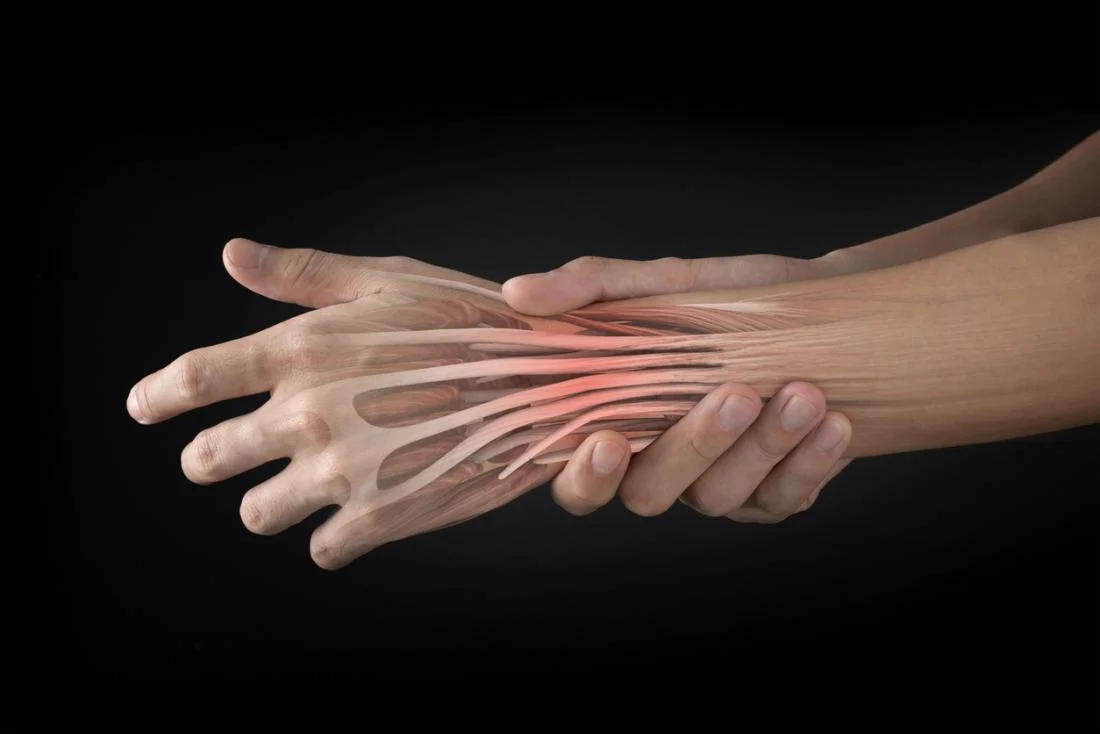
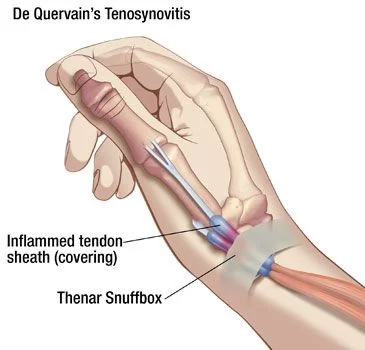
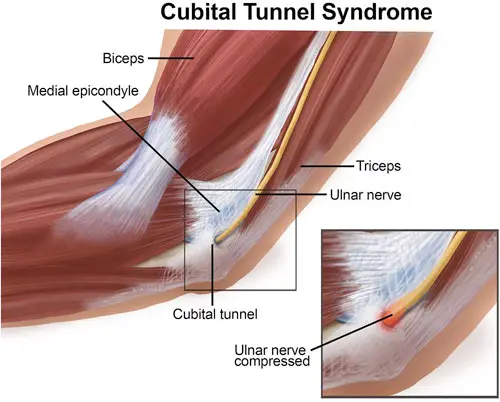
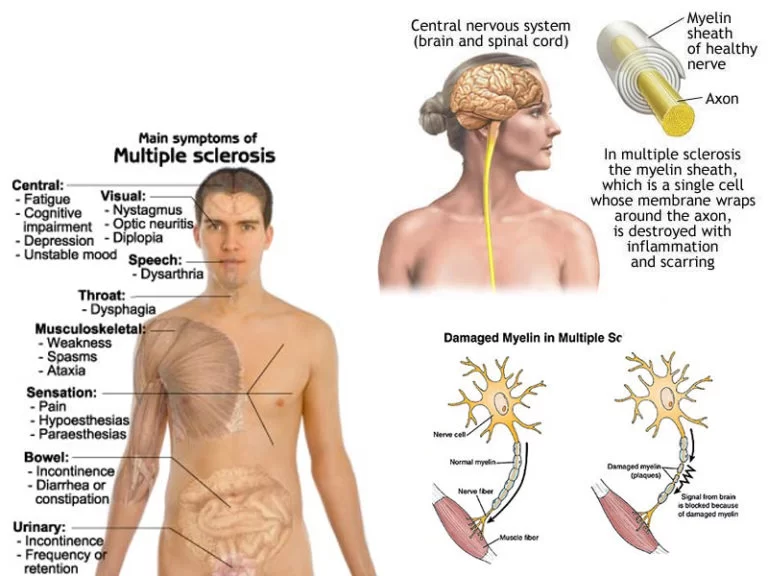

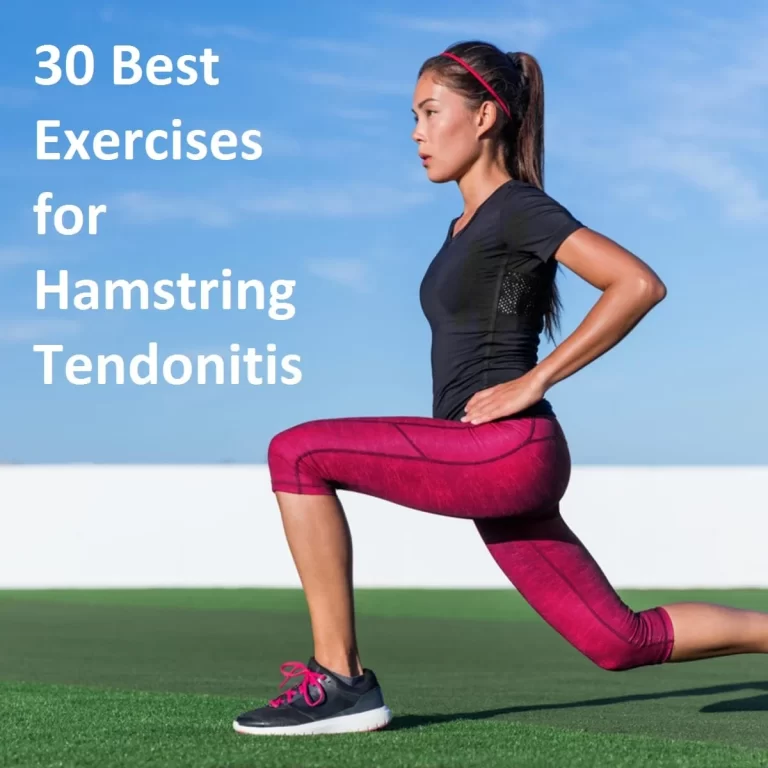
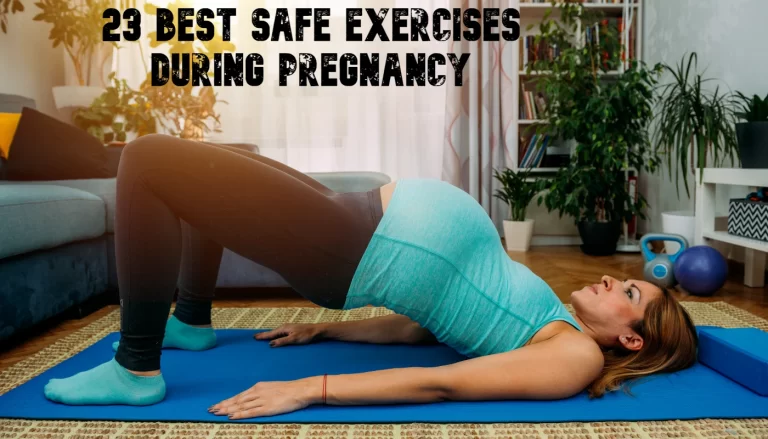
One Comment